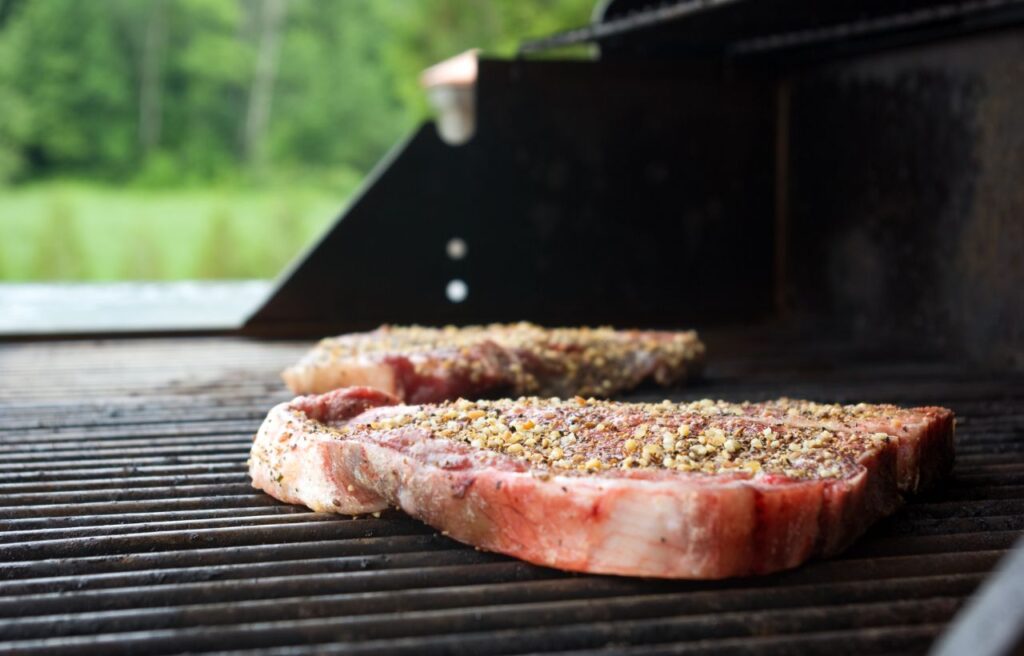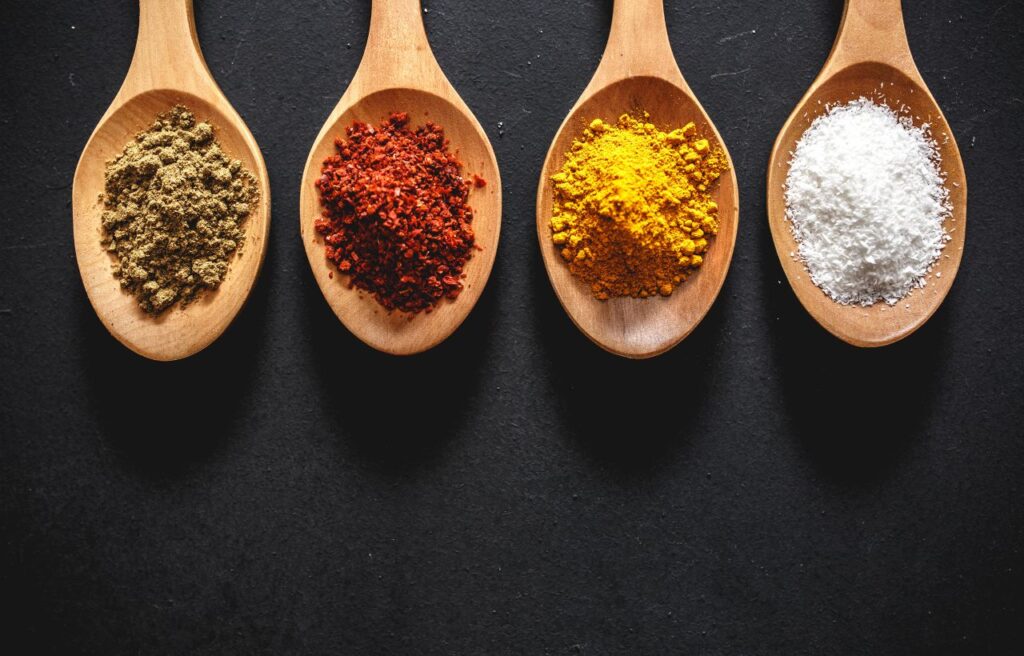Seasoning is the secret weapon of every accomplished chef, and mastering its art can elevate your culinary skills to new heights. In this guide, we will explore the world of seasoning, delving into the various types of spices, herbs, and techniques used to create mouthwatering dishes that leave a lasting impression.
Table of Contents
We cannot overstate the importance of seasoning in the culinary world. Seasoning is the key to unlocking the full potential of any dish, transforming even the simplest ingredients into something truly extraordinary. In this article, we will delve into the vital role of seasoning, explore the diverse world of seasonings, and emphasize the importance of using fresh, high-quality ingredients.
The Crucial Role of Seasoning in Cooking
Seasoning is the backbone of any successful dish, serving several essential functions:
- Enhancing flavor: Seasonings accentuate and complement the natural flavors of food, creating depth and complexity in taste.
- Balancing tastes: A skillful use of seasonings can harmonize and balance the various taste elements – sweet, salty, sour, bitter, and umami – in a dish, creating a well-rounded and satisfying culinary experience.
- Adding visual appeal: In addition to taste, seasonings can also contribute to the visual appeal of a dish, adding vibrant colors and textures that entice the senses.
Ultimately, the proper use of seasoning allows a chef to elevate their creations, taking dishes from ordinary to exceptional.
A World of Flavor: Types of Seasonings

Seasonings come in various forms, including spices, herbs, blends, and more. Understanding the different types of seasonings is essential for any culinary artist.
- Spices: Derived from the seeds, bark, roots, or fruits of plants, spices provide intense, concentrated flavors and aromas. Common examples include cinnamon, cumin, cloves, and nutmeg.
- Herbs: Made from the leaves of plants, herbs offer fresh, delicate flavors that complement a wide range of dishes. Popular herbs include basil, parsley, rosemary, and thyme.
- Blends: A combination of spices and herbs, blends are carefully crafted to create specific flavor profiles. Classic blends include curry powder, garam masala, and Italian seasoning.
- Specialty seasonings: These unique seasonings encompass a variety of ingredients, such as smoked salts, flavored oils, and infused vinegars, adding distinct flavors and textures to dishes.
The Benefits of Fresh, High-Quality Seasonings
Using fresh, high-quality seasonings is crucial to achieving the best results in your culinary creations. Here are some key benefits of using top-notch ingredients:
- Potency: Fresh, high-quality seasonings retain their essential oils and volatile compounds, resulting in more potent and pronounced flavors and aromas.
- Consistency: Premium seasonings have more consistent flavor profiles, allowing for better control and accuracy in seasoning dishes.
- Longevity: Fresh seasonings have a longer shelf life, ensuring that they maintain their flavor and potency for a more extended period.
To make the most of your seasonings, remember to store them properly in a cool, dark place, away from heat and direct sunlight, and grind or crush them just before use to release their natural oils and maximize flavor.
Understanding Flavor

The Five Basic Tastes and the Impact of Seasonings
Flavor is a complex and fascinating aspect of the culinary world. It is the result of a delicate interplay between the five basic tastes—sweet, sour, salty, bitter, and umami—along with other factors such as aroma, texture, and temperature. In this article, we will delve into the five fundamental tastes, examine the role of seasonings in affecting these tastes, and provide examples of seasonings that can enhance or balance specific flavors.
- Sweet: Perceived as pleasurable and often associated with sugar, sweet taste is found in many natural ingredients, such as fruits, honey, and milk.
- Sour: The acidic taste sensation, sour is most commonly associated with fruits like lemons, limes, and vinegar.
- Salty: As the name suggests, salty taste is linked to the presence of salt. It is a primary taste sensation and plays a crucial role in balancing flavors.
- Bitter: Often considered an acquired taste, bitter is characterized by a sharp, pungent sensation. It is found in ingredients like dark chocolate, coffee, and certain vegetables such as kale and radicchio.
- Umami: Often described as savory or meaty, umami is a taste sensation associated with glutamate, an amino acid found in foods like mushrooms, tomatoes, soy sauce, and aged cheese.
The Role of Seasonings in Affecting Tastes
Seasonings play a significant role in influencing the five basic tastes, enhancing or balancing flavors to create harmonious and satisfying dishes. By skillfully utilizing various seasonings, a chef can manipulate tastes and textures to bring out the best in their culinary creations.
Examples of Seasonings for Enhancing and Balancing Flavors
- Enhancing sweetness: Spices such as cinnamon, nutmeg, and vanilla can accentuate sweet flavors, making them ideal for use in desserts and baked goods. Honey and maple syrup are also popular natural sweeteners that can enhance the sweetness of a dish.
- Balancing sourness: A touch of acidity from lemon juice or vinegar can brighten a dish and counterbalance rich, heavy flavors. Conversely, sweetness can be used to mellow sourness, as seen in dishes like sweet and sour sauce.
- Amplifying saltiness: Ingredients like soy sauce, fish sauce, and anchovies can add a salty, umami-rich depth to dishes, enhancing their overall flavor profile.
- Taming bitterness: The addition of fat, such as butter or cream, can help temper bitter flavors, as can the incorporation of sweetness. For example, pairing bitter greens with a sweet balsamic glaze creates a more balanced taste experience.
- Boosting umami: To heighten umami flavors, consider using ingredients like tomato paste, mushrooms, or miso paste. These seasonings can elevate the savory taste in a dish, making it more satisfying and complex.
The Foundations of Seasoning

Salt, Pepper, and Beyond
Understanding the basics of seasoning is crucial for any aspiring culinary artist. Let’s start with the foundation: salt and pepper.
- Salt: The most essential seasoning, salt enhances the natural flavors of food and balances sweetness, acidity, and bitterness. There are various types of salt, including table salt, kosher salt, and sea salt, each offering unique textures and flavors.
- Pepper: Adding depth and heat to dishes, pepper is the second most important seasoning. Black, white, and green peppercorns provide different levels of spiciness and aroma, allowing for versatility in their use.
Moving beyond salt and pepper, it’s important to familiarize yourself with other commonly used seasonings:
- Garlic: Aromatic and flavorful, garlic can be used fresh, powdered, or as granules to impart a distinctive taste to a wide variety of dishes.
- Onion: Providing a savory, slightly sweet taste, onions can be used fresh or as onion powder to enhance the flavor of many recipes.
- Paprika: This vibrant red spice is made from ground red peppers and adds a sweet, mild heat to dishes.
- Cumin: With its earthy and warm flavor, cumin is a staple in Middle Eastern, Indian, and Mexican cuisine.
Herbs and Spices: A World of Flavor
Expanding your seasoning repertoire to include herbs and spices from around the globe is essential for creating diverse, flavorful dishes. Here’s a breakdown of some popular herbs and spices:
- Basil: A key ingredient in Italian cuisine, basil adds a sweet, slightly minty flavor to dishes like pasta, pizza, and salads.
- Oregano: With its robust, earthy taste, oregano is a staple in Mediterranean and Mexican cooking.
- Rosemary: This fragrant herb imparts a piney, slightly bitter taste to roasted meats, vegetables, and bread.
- Thyme: With its subtle, minty flavor, thyme is a versatile herb that pairs well with a wide range of dishes.
- Cilantro: A popular herb in Mexican and Asian cuisine, cilantro adds a fresh, citrusy flavor to dishes like tacos, curries, and salads.
- Cinnamon: Sweet and warming, cinnamon is a versatile spice used in both sweet and savory dishes, such as baked goods, curries, and stews.
- Ginger: A zesty, aromatic spice, ginger is commonly used in Asian cuisine, adding a warm, spicy kick to dishes like stir-fries, soups, and desserts.
Balancing Flavors and Creating Depth

To create a harmonious and flavorful dish, it’s important to balance the various taste elements: sweet, salty, bitter, sour, and umami. Here are some tips for achieving this balance:
- Layer flavors: Use a combination of herbs, spices, and other seasonings to build complexity and depth in your dishes.
- Taste as you go: Regularly taste your food while cooking to ensure proper seasoning and adjust as needed.
- Adjust acidity: Adding an acidic component, such as lemon juice or vinegar, can brighten and balance flavors.
- Experiment: Don’t be afraid to explore new flavor combinations and mix and match different seasonings to discover your signature style.
Dry vs. Wet Seasoning: Techniques for Flavorful Dishes
Understanding when to use dry or wet seasoning techniques is key to achieving the desired flavors and textures in your dishes. Let’s explore both methods:
- Dry Seasoning: This technique involves using dry herbs and spices directly on the food. Dry seasoning is ideal for roasting, grilling, or baking, as it creates a flavorful crust on the exterior of the dish. Examples include spice rubs for meats and dry brines for poultry.
- Wet Seasoning: Wet seasoning, also known as marinating, involves soaking ingredients in a liquid mixture that contains herbs, spices, and other flavorful components. This method is ideal for infusing flavors into meat, fish, and vegetables, and can tenderize tougher cuts. Examples include yogurt-based marinades for chicken and soy sauce-based marinades for beef.
Mastering Seasoning Techniques: Tips for Success
In the culinary world, seasoning techniques play a vital role in creating dishes that burst with flavor and depth. These techniques encompass dry rubs, marinades, and infused oils and vinegars, as well as the practice of toasting spices and herbs. In this article, we will explore these seasoning techniques and discuss their benefits, equipping you with the skills to elevate your cooking to new heights.
Dry Rubs and Marinades: Powerful Flavor Boosters
- Dry rubs: A dry rub is a blend of dry spices and herbs that is applied directly to the surface of meat, poultry, or fish before cooking. The purpose of a dry rub is to form a flavorful crust on the exterior of the dish, adding both taste and texture. Dry rubs are particularly effective for grilling, roasting, and baking, as they help to seal in moisture and promote even cooking. To create a dry rub, simply mix your chosen spices and herbs in a bowl, then massage them onto the surface of the food, ensuring even coverage.
- Marinades: Marinades are liquid mixtures that incorporate herbs, spices, and other flavorful components, such as fruit juices, vinegars, or oils. They serve to both infuse flavors into the food and, in some cases, tenderize tougher cuts of meat. The duration of marinating can range from a few hours to overnight, depending on the desired depth of flavor and the type of food being marinated. To create a marinade, combine your chosen ingredients in a non-reactive container, then immerse the food in the mixture and refrigerate for the recommended time.
Infusing Flavors with Oils and Vinegars
Infusing oils and vinegars is a simple yet effective way to add a burst of flavor to your dishes. By steeping herbs, spices, or other ingredients in oil or vinegar, you can create a concentrated essence that can be used in dressings, sauces, or as a finishing touch to various dishes. To create an infused oil or vinegar:
- Choose your base oil or vinegar. Neutral oils, such as grapeseed or vegetable oil, are ideal for showcasing the flavors of the infused ingredients. For vinegars, opt for a high-quality base, such as white wine, red wine, or apple cider vinegar.
- Select your flavoring ingredients, which can include fresh or dried herbs, spices, citrus peels, or even fruits and vegetables.
- Combine the ingredients in a clean, sterilized jar or bottle, ensuring they are fully submerged.
- Seal the container and store it in a cool, dark place for at least one week, shaking it occasionally to distribute the flavors.
- Once the desired intensity is reached, strain the oil or vinegar to remove any solids and store it in a clean, airtight container.
The Benefits of Toasting Spices and Herbs
Toasting spices and herbs is a simple yet transformative technique that can unlock their full flavor potential. By gently heating the spices and herbs in a dry skillet, you can release their essential oils, resulting in a more intense and aromatic seasoning. The benefits of toasting spices and herbs include:
- Enhanced flavor: Toasting increases the depth and complexity of the spices and herbs, making them more pronounced in the final dish.
- Improved aroma: The process of toasting releases the volatile compounds responsible for the enticing aromas of spices and herbs.
- Better texture: Toasting can lend a pleasant crunch to certain spices, such as cumin seeds or mustard seeds, adding an additional dimension of texture to your dishes.
To truly master the art of seasoning, it’s important to consider these essential tips:
- Quality matters: Invest in high-quality, fresh herbs and spices to ensure maximum flavor and potency.
- Grind your spices: Grinding whole spices just before use releases their natural oils and enhances their flavors, resulting in a more vibrant taste.
- Toast spices: Briefly toasting spices in a dry skillet can help release their essential oils, intensifying their flavors and aroma.
- Store seasonings properly: Keep your herbs and spices in a cool, dark place, away from heat and direct sunlight, to maintain their freshness and flavor.
- Know your heat levels: Be aware of the spiciness of your seasonings, and adjust accordingly to your personal preference and the dish you are preparing.
Cooking with Seasonings

The art of seasoning is a vital skill for any chef or home cook, as it allows them to elevate the taste and appeal of their dishes. In this article, we will discuss how to season proteins, vegetables, and pantry staples for optimal flavor and nutrition, providing you with the tools to create mouthwatering, memorable meals.
Seasoning Proteins: Unlocking Flavor Potential
- Meat: For optimal flavor, season meat generously with salt and pepper before cooking. The salt enhances the natural flavors and helps to form a delicious crust, while pepper adds a touch of heat. For more complex tastes, consider adding spices, herbs, or a dry rub. When marinating meats, allow enough time for the marinade to penetrate the surface, but be mindful of acidic ingredients that can break down proteins and affect the texture of the meat.
- Poultry: To ensure flavorful poultry, season both the exterior and interior of the bird. For whole birds, consider rubbing the skin with a mixture of butter and herbs, and adding herbs, citrus, or aromatics to the cavity. For individual pieces, a dry rub or marinade can enhance the taste and tenderness.
- Fish: Fish can be delicate, so it’s essential to season it gently. Use a light touch when applying salt and spices, and consider using citrus or fresh herbs to complement the natural flavors. To prevent the fish from sticking during cooking, marinate or coat it with oil or another fat.
- Tofu: Tofu is a versatile protein that readily absorbs flavors. To maximize taste, press the tofu to remove excess moisture, then marinate it in a flavorful liquid or coat it with a dry rub. For added texture and flavor, consider pan-frying or grilling the tofu after seasoning.
Seasoning Vegetables: A Balance of Flavor and Nutrition
- Salt: Adding a small amount of salt to vegetables can help to bring out their natural sweetness, enhancing their overall flavor. However, avoid over-salting, as this can cause vegetables to lose moisture and become limp.
- Acidity: A splash of vinegar or lemon juice can brighten the taste of vegetables, balancing their natural sweetness and bitterness.
- Herbs and spices: Use herbs and spices to complement the flavors of vegetables, taking care not to overpower their natural taste. For example, pair delicate vegetables like asparagus with light herbs such as dill, and more robust vegetables like squash with bolder spices like cinnamon or cumin.
- Cooking methods: Different cooking methods can impart unique flavors to vegetables. Roasting or grilling can caramelize the natural sugars, while steaming or blanching preserves their fresh taste and nutrients.
Seasoning Grains, Pasta, and Pantry Staples: Elevating Everyday Ingredients
- Grains: To enhance the flavor of grains such as rice, quinoa, or bulgur, consider toasting them in a dry skillet or with a small amount of oil before cooking. Adding aromatics like garlic, onion, or bay leaves during the cooking process can also boost their taste.
- Pasta: For maximum flavor, generously salt the pasta cooking water, which helps to season the pasta from within. Additionally, consider incorporating flavorful ingredients like herbs, spices, or grated cheese into the pasta sauce.
- Legumes: Legumes, such as beans and lentils, benefit from being simmered with aromatics like garlic, onions, or herbs. Adding a splash of vinegar or a squeeze of lemon juice at the end of cooking can
Conclusion
Mastering the art of seasoning is an essential skill for any home cook or professional chef. By understanding the foundations of seasoning, exploring global herbs and spices, and utilizing effective techniques, you can elevate your dishes and create unforgettable culinary experiences. The key to success is practice and experimentation, allowing you to develop your unique style and flavor profiles.

